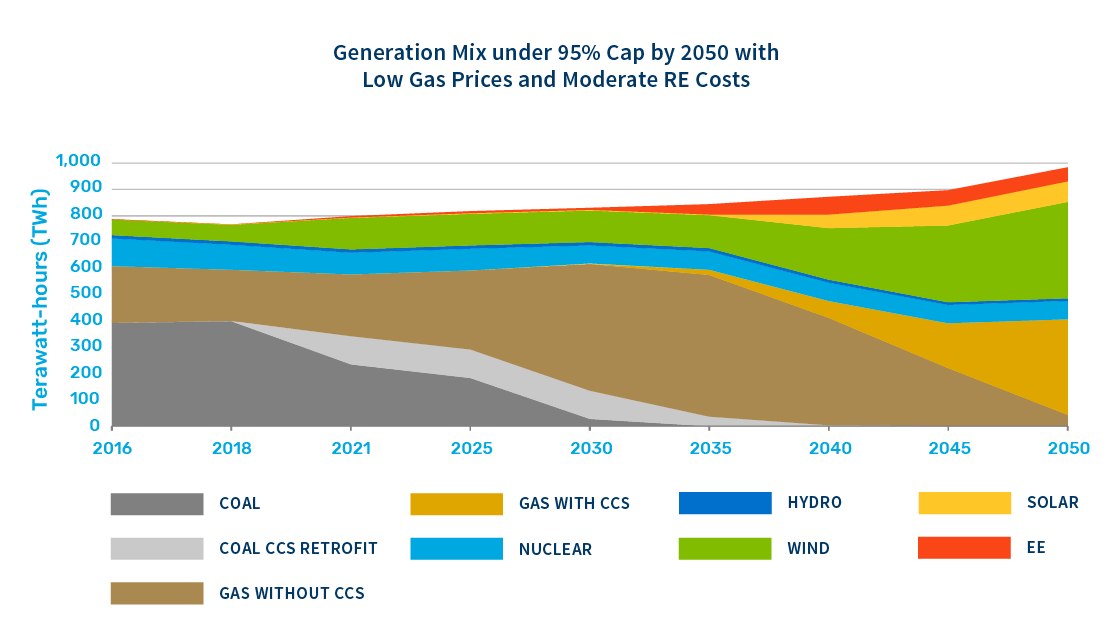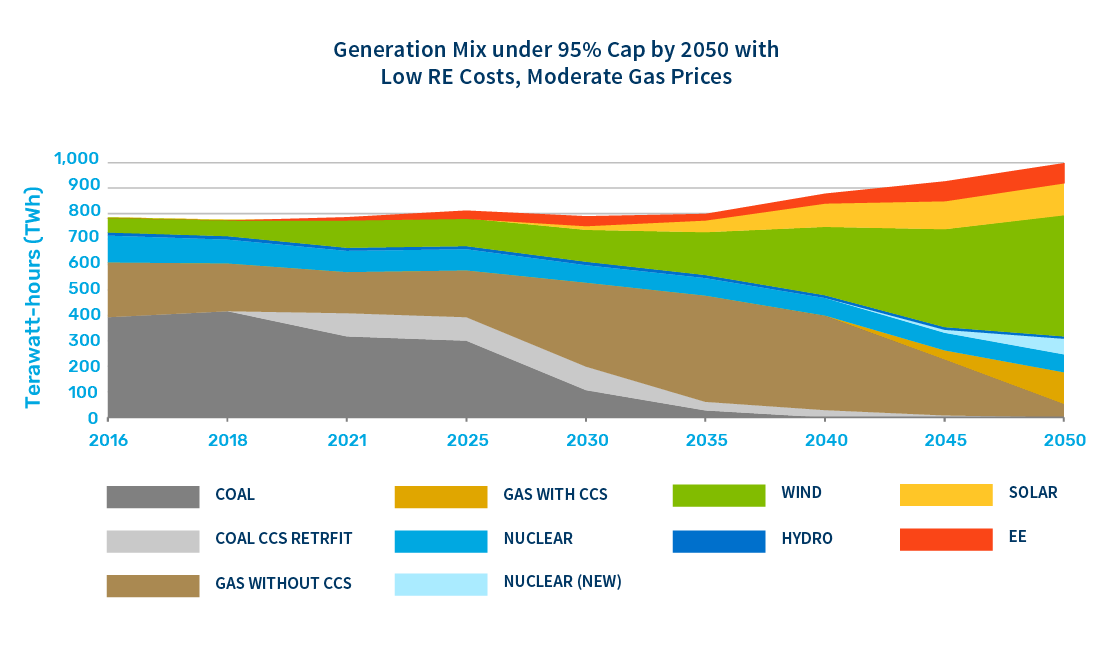Reaching 95 Percent Decarbonization
If one assumes that the region’s electricity system will need to reach a deeper level of decarbonization that is 95 percent below 2005 levels by 2050, the analysis suggests that again the optimal makeup of the system depends on natural gas prices and the cost of renewables.
In a more tightly carbon-constrained world:



The Role of Natural Gas
To get to 95 percent decarbonization there is an even steeper drop off in natural gas use after 2040, again raising the question about natural gas path dependency and raising the cost of reductions when that gas can no longer be utilized. Natural gas with carbon capture and storage is a bigger part of the mix in later years.
How Carbon Capture and Storage Impacts Modeling Results
Carbon capture and storage (CCS) plays a sizeable role. In the near-term, between ten and 14 GW of existing coal capacity is retrofitted with capture to take advantage of the federal tax credits for CO2 storage, making up between 10 and 13 percent of the total generation mix in 2030. This retrofitted capacity is not used once the tax credits expire. Natural gas with CCS becomes a significant part of the mix in the latter part of the modeled time horizon in all of the 95 percent scenarios, especially when gas prices are lower.

The Role of Renewables
Wind and solar become dominant in the cases where gas prices are moderate and play a large role even in a low gas price future. To reach decarbonization of 95 percent, wind capacity more than triples compared to the business as usual model, reaching levels in excess of 130 GW of capacity by 2050, when wind and solar combined are between 45 and 64 percent of the generation mix.
Below you can access more modeling analysis through an interactive feature provided by the Midcontinent Power Sector Collaborative’s FACETS modeler.


